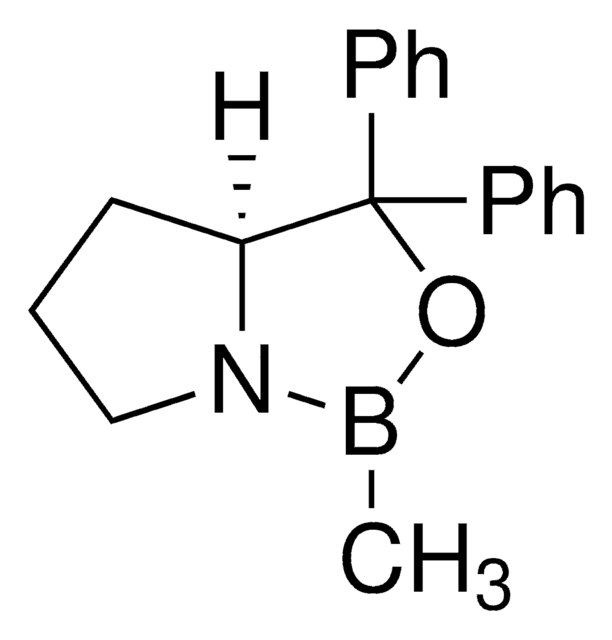471712
tert-Butanol
anhydrous, ≥99.5%
Synonym(s):
2-Methyl-2-propanol, tert-Butyl alcohol, Trimethyl carbinol
About This Item
Recommended Products
grade
anhydrous
Quality Level
vapor density
2.5 (vs air)
vapor pressure
31 mmHg ( 20 °C)
44 mmHg ( 26 °C)
Assay
≥99.5%
form
solid or liquid
autoignition temp.
896 °F
expl. lim.
8 %
impurities
<0.005% water
evapn. residue
<0.0003%
refractive index
n20/D 1.387 (lit.)
pH
7 (20 °C)
bp
83 °C (lit.)
mp
23-26 °C (lit.)
solubility
water: miscible
density
0.775 g/mL at 25 °C (lit.)
SMILES string
CC(C)(C)O
InChI
1S/C4H10O/c1-4(2,3)5/h5H,1-3H3
InChI key
DKGAVHZHDRPRBM-UHFFFAOYSA-N
Looking for similar products? Visit Product Comparison Guide
Related Categories
General description
Application
- Synthesis of Ribose - Oleic Acid Esters in the Presence- and Absence of Candida antarctica Lipase B.: This study investigates the synthesis of ribose-oleic acid esters using tert-Butanol as a solvent, both with and without the presence of Candida antarctica Lipase B. The research explores the efficiency and effectiveness of the enzyme-catalyzed process, highlighting the impact of tert-Butanol on the synthesis reaction. The findings contribute to the understanding of esterification processes in analytical chemistry and have potential applications in developing new synthetic methods (Çetinkaya et al., 2020).
Signal Word
Danger
Hazard Statements
Precautionary Statements
Hazard Classifications
Acute Tox. 4 Inhalation - Eye Irrit. 2 - Flam. Liq. 2 - STOT SE 3
Target Organs
Central nervous system, Respiratory system
Storage Class Code
3 - Flammable liquids
WGK
WGK 1
Flash Point(F)
59.0 °F - closed cup
Flash Point(C)
15 °C - closed cup
Personal Protective Equipment
Choose from one of the most recent versions:
Certificates of Analysis (COA)
Don't see the Right Version?
If you require a particular version, you can look up a specific certificate by the Lot or Batch number.
Already Own This Product?
Find documentation for the products that you have recently purchased in the Document Library.
Customers Also Viewed
Articles
Substances are said to be miscible in one another if they dissolve to form a uniform solution. Bookmark or download our miscibility table for common lab solvents.
Our team of scientists has experience in all areas of research including Life Science, Material Science, Chemical Synthesis, Chromatography, Analytical and many others.
Contact Technical Service















